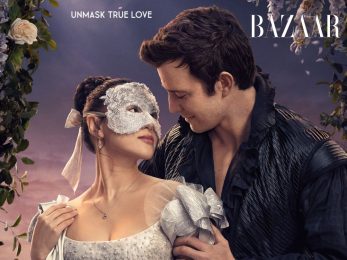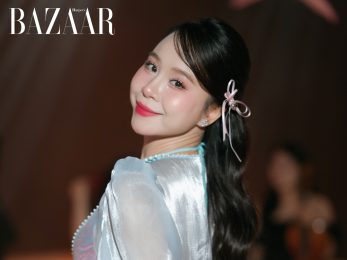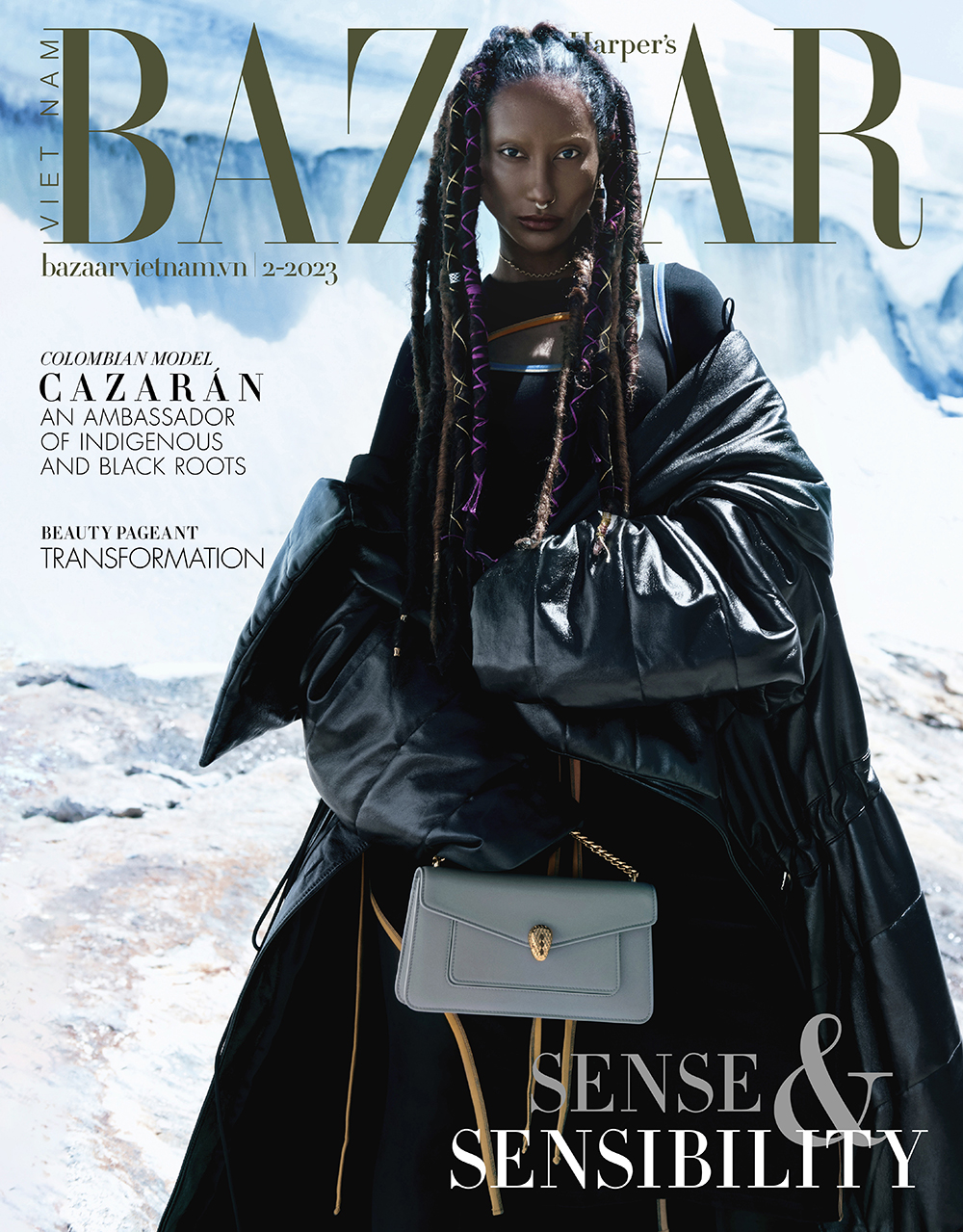
Cazarán is wearing a dress by Diesel. Coat, Alfredo Martinez. Bag, Bulgari Forever East-West.
Cazarán began modeling at the age of 15, encouraged by her sister. She participated in the Elite Model Look Colombia, competing with 300 young women and won. Years later, she participated in the Miss Grand Colombia contest and won the opportunity to represent her country in the Top Model of the World competition. However, she resigned to finish her studies as a psychologist.
In 2020 she participated in Miss Universe Colombia, where she was one of the 16 finalists.
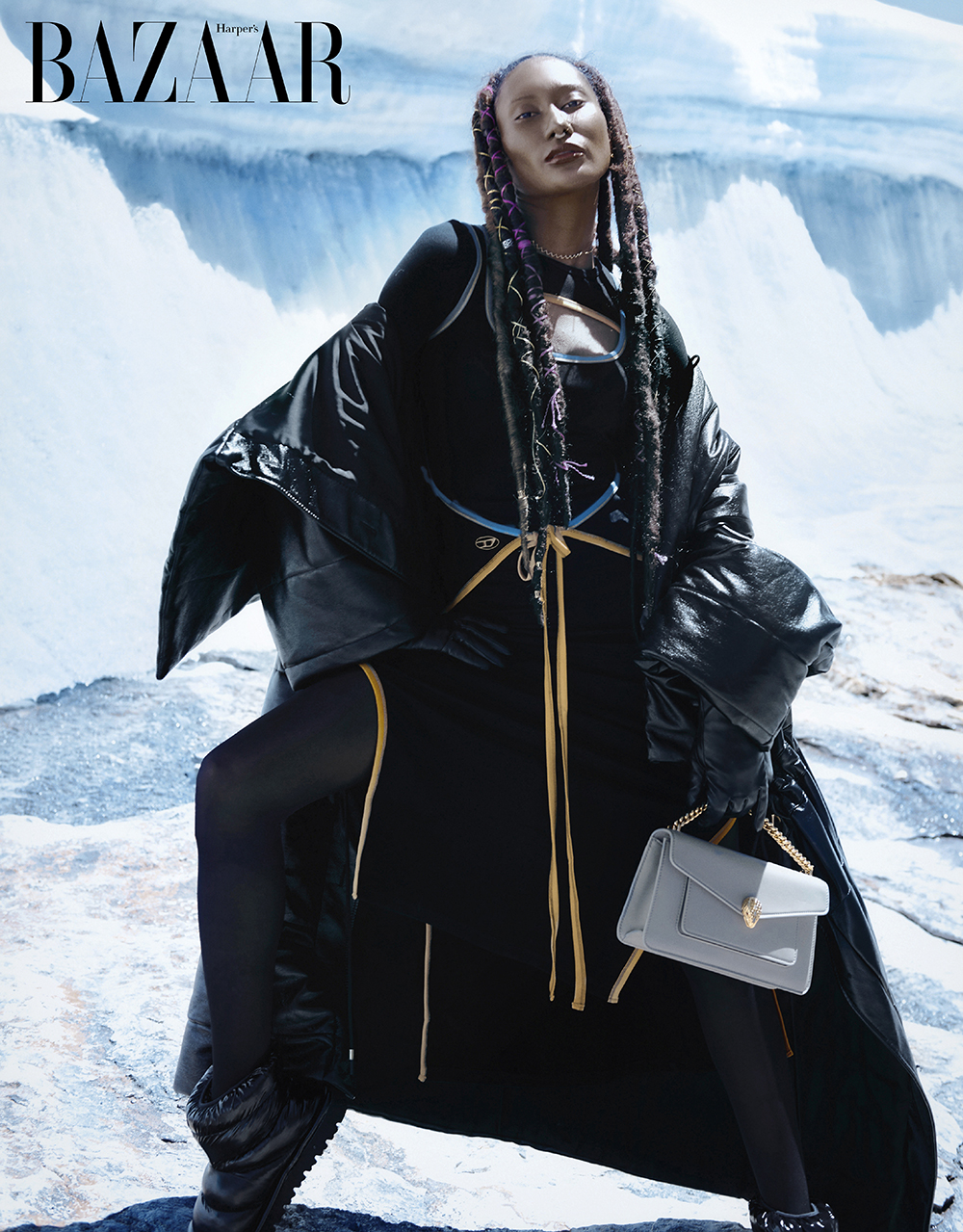
Early life of Cazarán
Cazarán was born in Villanueva, Casanare, located in the Colombian eastern plains. She spent her best vacations and Christmas times at her grandparents’ house, surrounded by her maternal family, traditional food, music, dance, happiness, love and unity.
As a child, Cazarán was very curious, so she asked her mother to enroll her in many courses. “I took plaster painting classes, played volleyball and gymnastics, learned boxing, and even took some classes to learn to play the harp, a typical instrument of the eastern region,” she stated.
Later, her family moved to Villavicencio, where Cazarán lived for two decades.
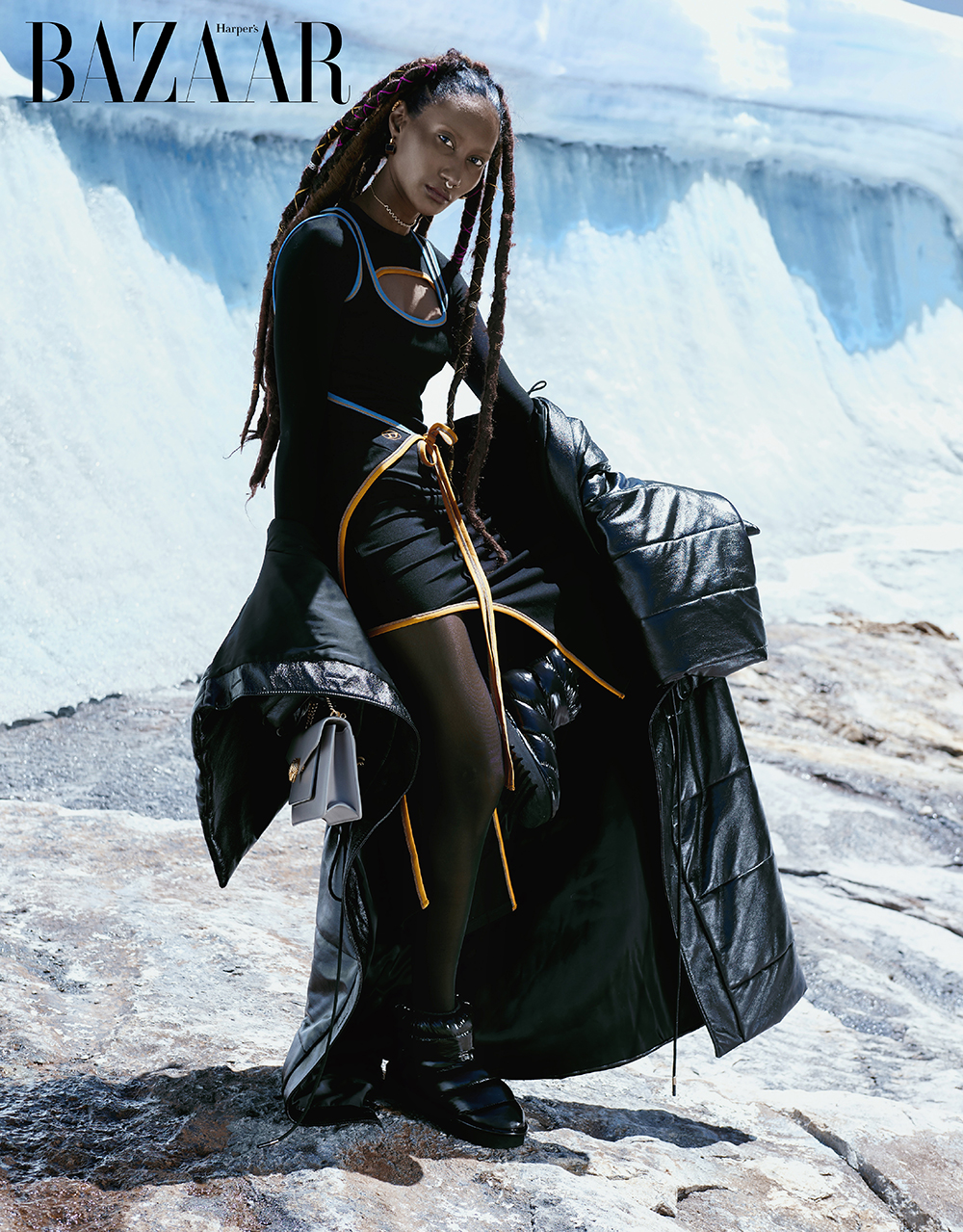
From the Colombian plains to the Colombian capital
At the age of 23, Cazarán traveled to the capital city from her hometown with money earned from her job as a promotion model, intending to do some shopping. However, she ended up staying in Bogotá for several years to pursue her dream of becoming a model.
“Fortunately I was surrounded by amazing people. When I arrived in Bogotá, I stayed at a friend’s house, which was shared by two other people. I called it my home for a month. I decided to stay longer in Bogotá to pursue my dream. Eventually, I was able to pay the rent for a shared apartment using the money that I earned from my first job”.

Jumpsuit, Alfredo Martinez Brand Jumpsuit. Gloves & scarf, Bimba y Lola.
From Miss Casanare to be a Top Model
When Cazarán was younger, she shared with her school friends her desire to become a model and walk on international runways, but they took it as a joke. “I was struggling with my identity and grappling with accepting my ethnicity. I thought I could never be striking, beautiful, or accepted in a world full of beauty stereotypes that emphasized features that were different from my own,” she says.
Participating in Elite Model Look Colombia was a significant challenge for her, as she had no experience and was very introverted. To this day, she is surprised that she won that contest. “Now, I can understand why. I was everything they were looking for: a diamond in the rough that they could polish. It was an opportunity that pushed me to work with them,” she explains.
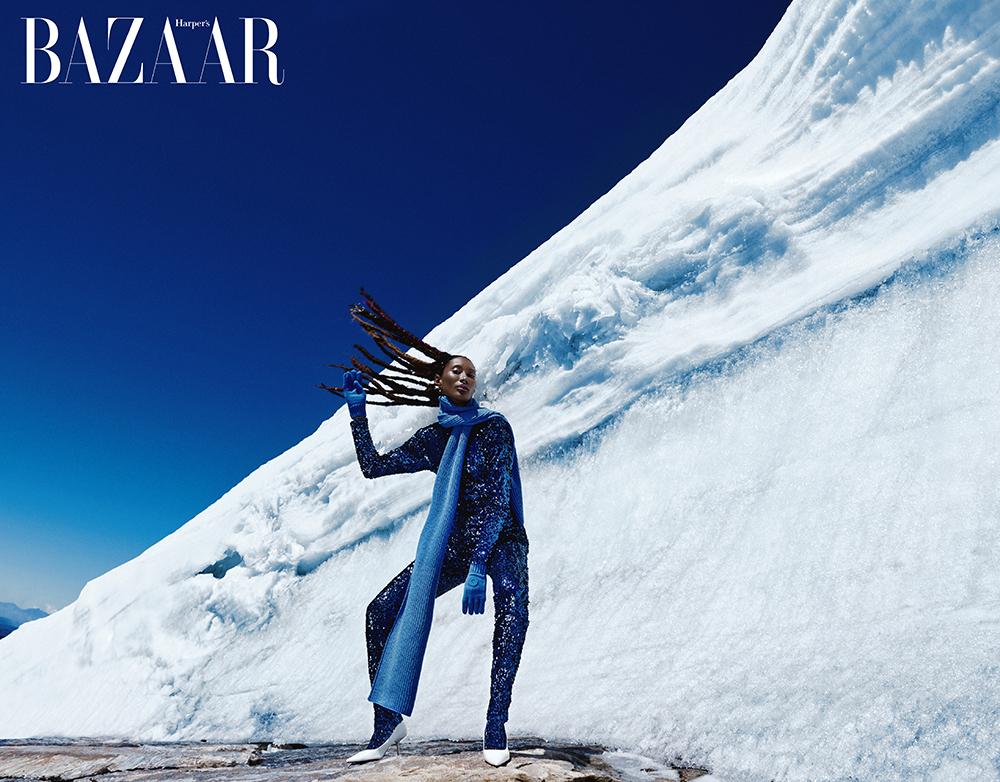
Later on, she made the decision to sign up for Miss Universe Colombia, with the support of her best friend, Marcel Castellano, and other friends who helped with specific areas such as makeup, body expression, photography, posing, catwalk, diction, and even physical training. “We had no financial resources, no sponsorships, and I had no experience or connections in the beauty industry. However, despite the highest level of corruption exposure that I had ever experienced, I made it to the top 16,” she notes.
After that, she met Alfredo Navarro, the manager and director of the Caracal Management modeling agency. He saw in her the potential to be a top model. “We met through networking and casting, and we agreed to a meeting on a messaging platform. After finishing my contract with my previous agency and the universal beauty contest, we embarked on a new challenge. That has led me to model at New York Fashion Week today,” she says.
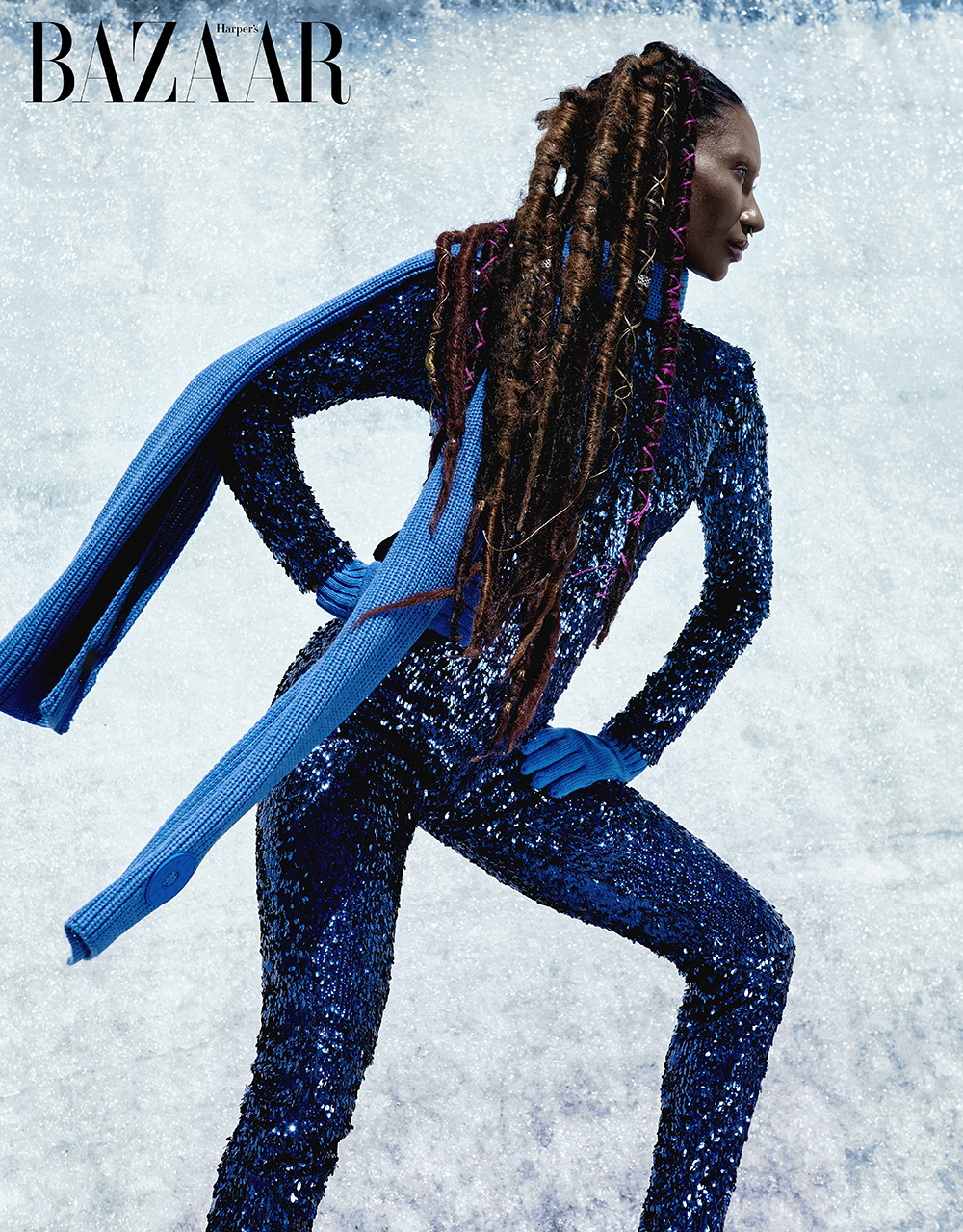
A mixture of indigenous and black roots
Cazarán takes great pride in highlighting her heritage as an ambassador of both indigenous and black roots. Her Afro heritage comes from her father’s side, while her mother’s side represents her indigenous culture. She felt immense joy during her first experience of photo shooting in the sacred territory of the UW’A indigenous community at the Ritak’uwa peak. It was approximately 5,330 mbsl in El Cocuy National Natural Park, located in the northeastern part of the Eastern Cordillera of the Colombian Andes.
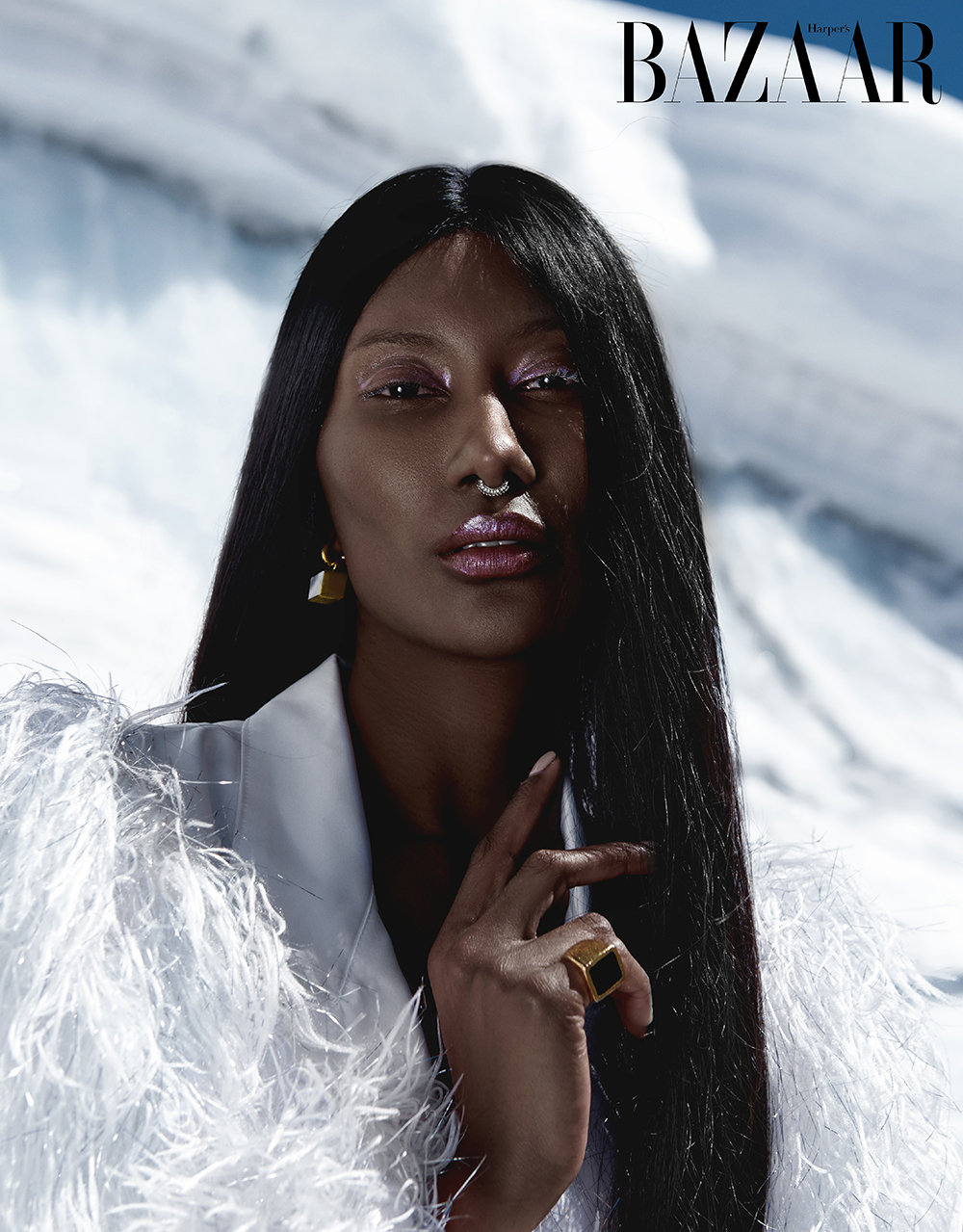
Alfredo Navarro, her manager and creative director, proposed the idea of shooting the photos in the snowy mountain. “When he initially explained how and where the photo shoot would be, I didn’t imagine how difficult it would be. But it was great to work in a paramo, which is considered a sacred and natural reserve, with a production team of six people,” Cazarán states. This proposal had never been attempted in her country before.
The journey was arduous, lasting four hours to walk to the top of the paramo, followed by three hours of shooting and another two hours to return. The landscape, the diversity of thermal floors, and the opportunity to call for the transformation of the fashion industry from a diverse approach made the extensive and exhausting job worth it.
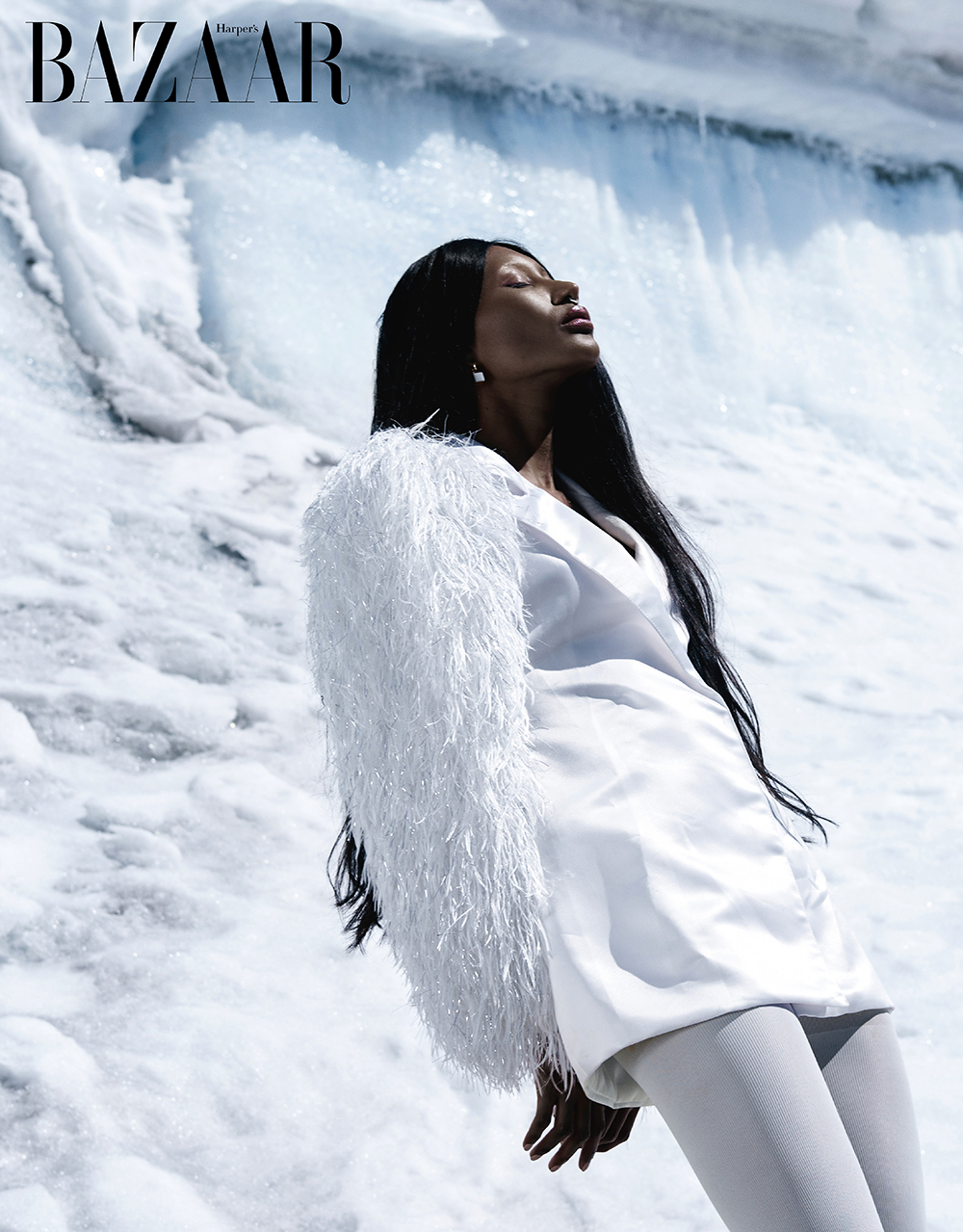
Blazer, Alfredo Martinez Brand.
Cazarán believes that the fashion industry must embrace movements of justice, equity, and inclusion. She says, “While more brands are joining this idea, there are still many discourses that perpetuate the industry’s racist standards, limiting the participation of those with indigenous features. The parameters and standards of beauty do not fully coincide with the idea of inclusion.”
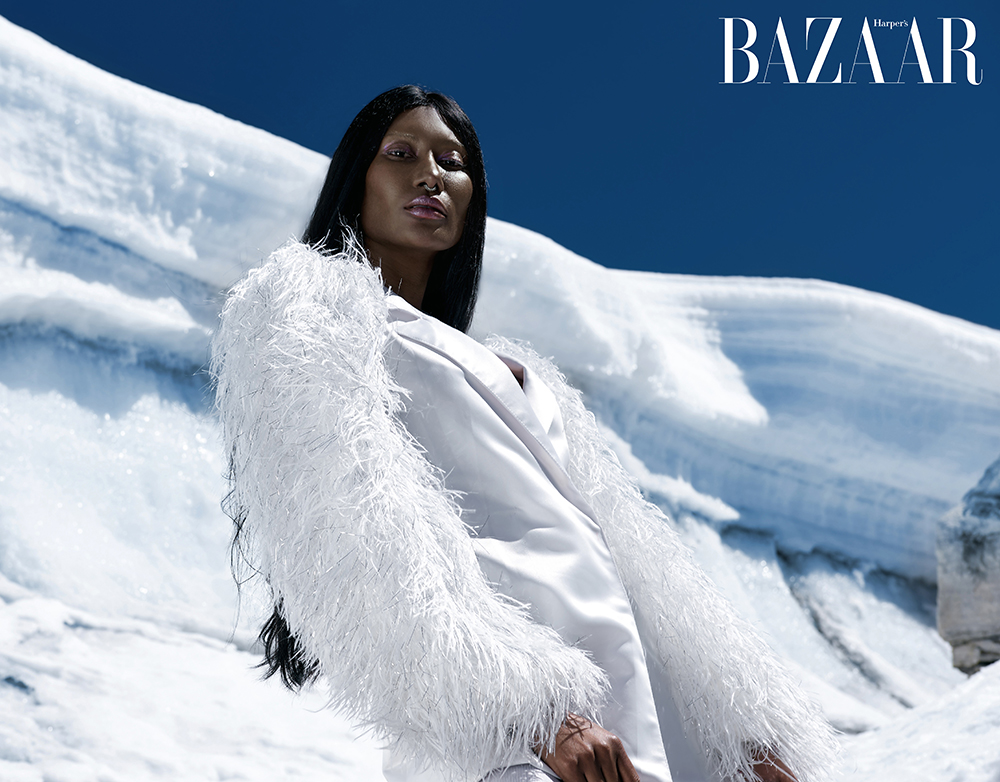
Speaking out for mental health
Psychology is another one of Cazarán’s passions. As part of her daily mission, she makes a conscious effort to be aware of her emotions, give herself space to feel, avoid living on autopilot, attend therapy, and take breaks throughout the day to process everything that is happening in her life.
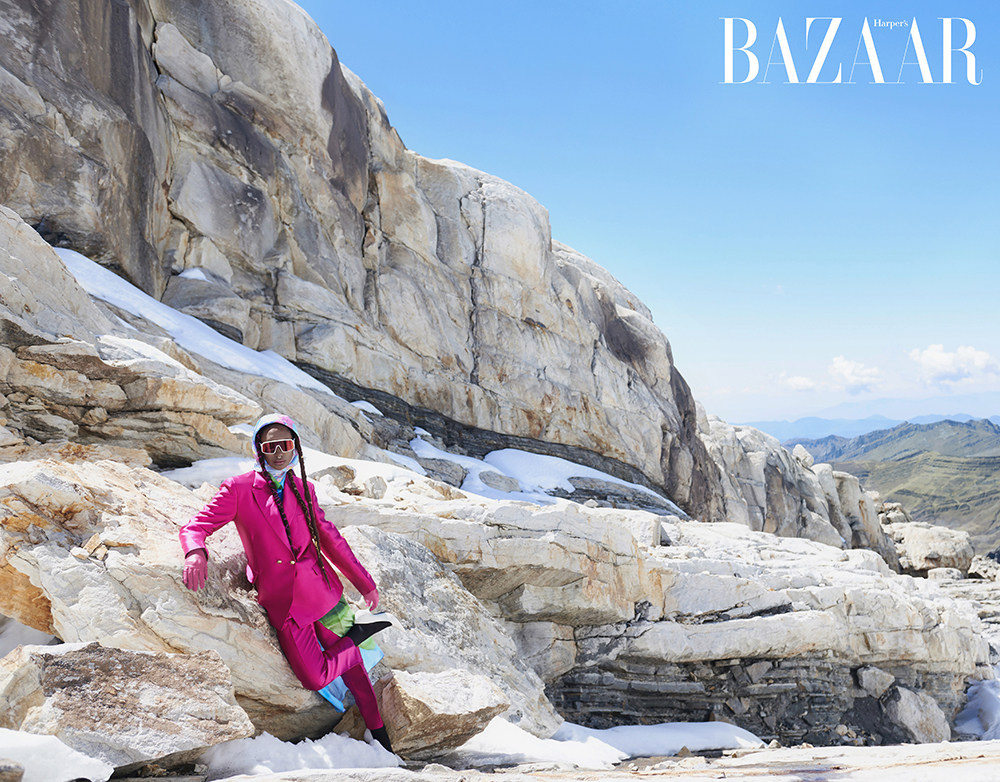
Scarf, Bulgari. Top and skirt, Silvia Tcherassi/ Bag, Bulgari Hobo Serpenti Forever. Sunglasses, Oakley.
“When I feel overwhelmed or tired, I acknowledge it and give myself permission to be human, without being unkind to myself. The fashion industry puts a lot of pressure on us to be thin, follow strict diets, attend long casting sessions, face constant criticism, experience failure, and constantly seek out that one special opportunity. These situations create emotional and psycho-affective vulnerability in us, and can lead to mental health issues such as depression, anxiety, eating disorders, and even suicide.”
For Cazarán, it is essential to prioritize mental health in the fashion industry. She wants to be empathetic and show love in a world that desperately needs it.
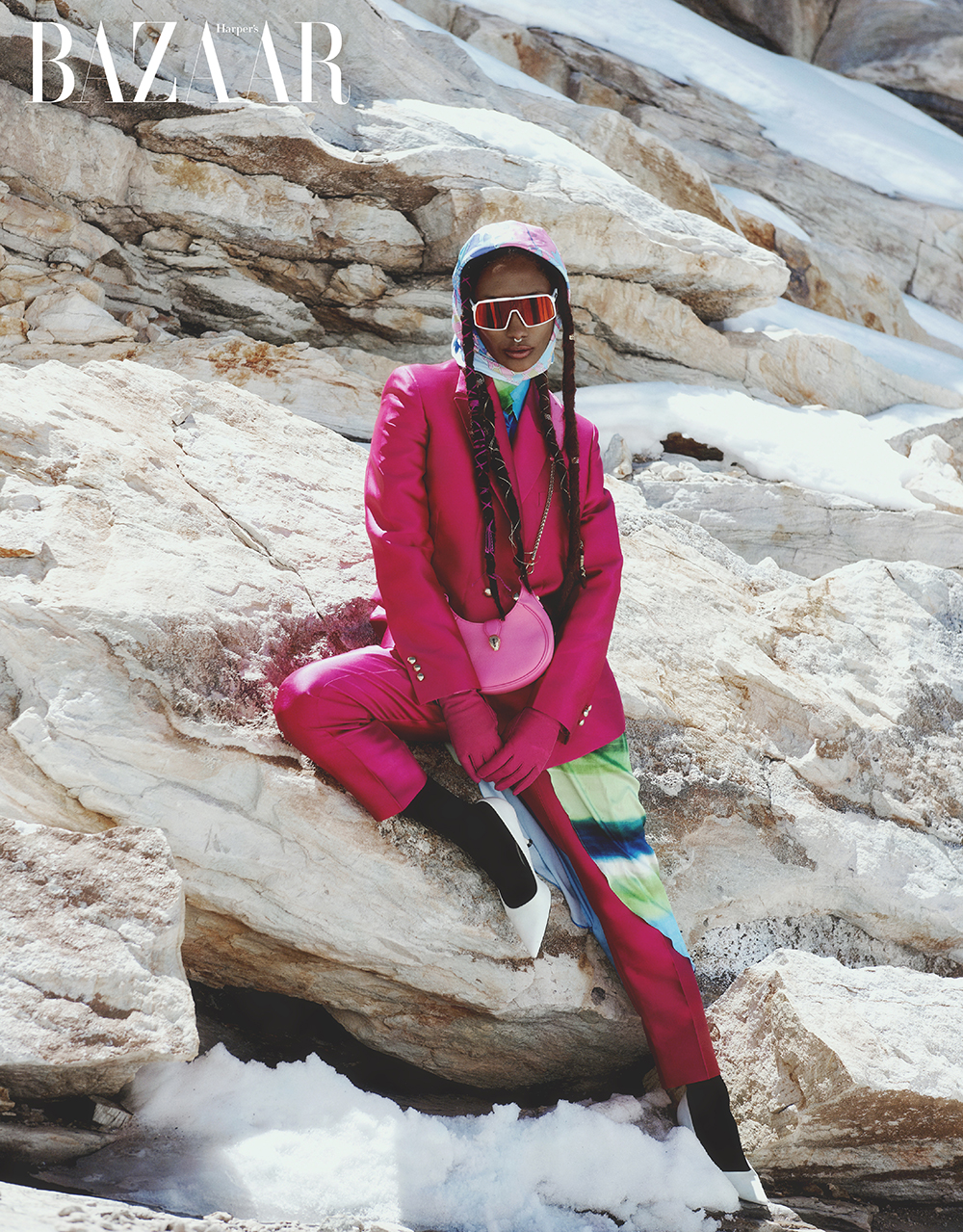
On way to the top
Today, after two years of development, her rebirth and several discoveries with her mother agency Caracal Management, Cazarán feels that she has been able to understand her mission as a model. She believes that it is “to build native beauty archetypes through brands, fashion, and catwalks, with no interest in standardizing women as an assembly line where they have to comply with a certain number of physical traits or look like a single race.” For her, the fundamental characteristic of women is DIVERSITY.

Cazarán recently finished her first season at New York Fashion Week. Her next stops are Milan Fashion Week and Paris Fashion Week. “In the future, I want to project my career hand in hand with activism and be a part of campaigns related to fashion, sustainability, and social responsibility. I want my job in the industry to be successful, but also to have a purpose that transforms society through the fashion scene,” she concludes.
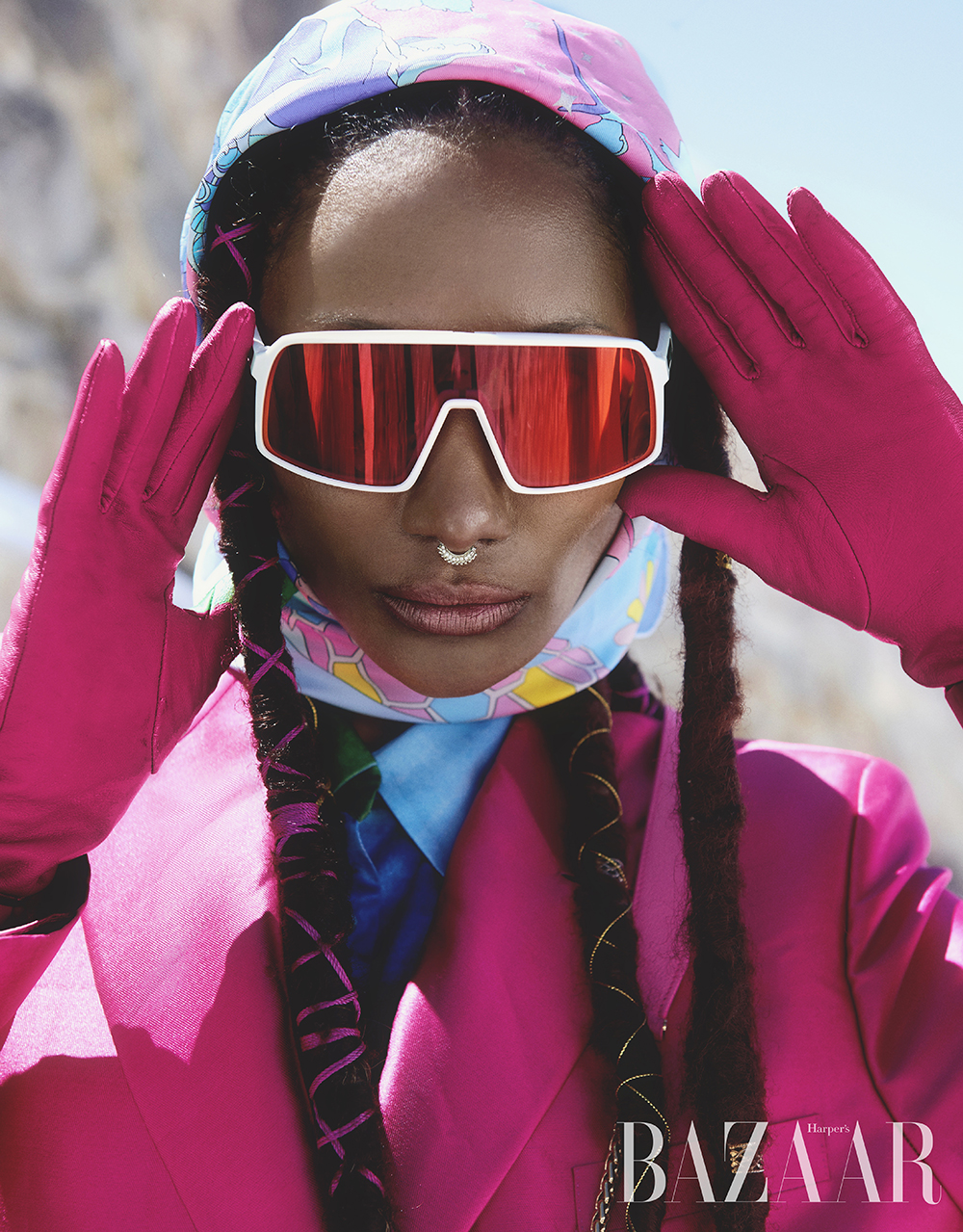
**Credits**
Model: Paola Cazaran @cazarannn.
Agency: @caracalmodelmanagement.
Photographer & Creative Director: David Ferraro @ferrarogphoto.
Videographer & Video Editor: Lejo Ramirez @lejoramirez.ph.
Fashion Editor & Stylist: Alejandra Muñoz @alejandramunozg.
Make Up Artist & Hair Stylist: Johnathan Sarmiento @j_makeup_artist.
Executive Producer & Casting Director: Alfredo Navarro @alfredonavarrro @caracalmanagement
Interview: Adriana Valencia press
PR Agency: Marc Juan Communications @marcjuancomunicacion
Harper’s Bazaar Vietnam



